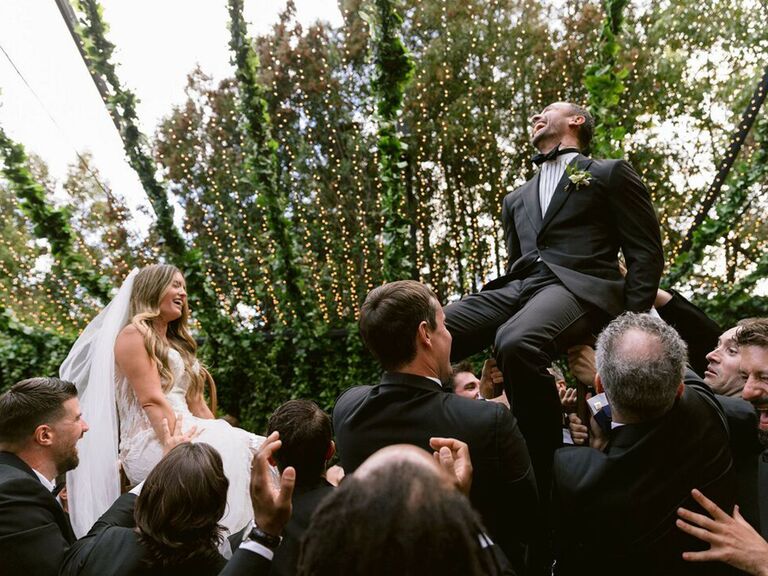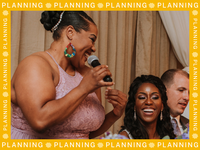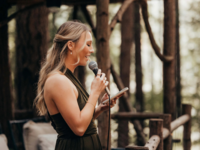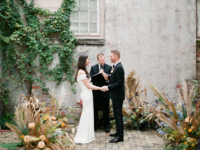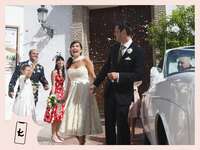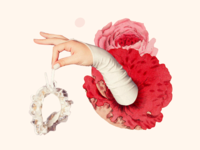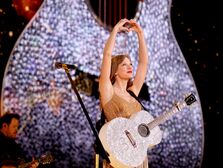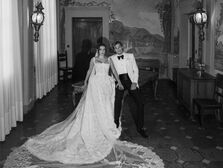The Hora Dance: Everything You Need to Know About This Jewish Tradition
One of the hallmarks of a Jewish wedding reception is the hora (also known as the horah). After the solemnity of the wedding ceremony, this lively tradition brings loved ones together on the dance floor for a rollicking good time. Amidst all the fun, the hora dance has a deeper meaning that you might not be aware of. We spoke to Rabbi Elyssa Cherney, a wedding officiant and founder of TacklingTorah in Philadelphia for her expert take on the history, significance and details behind this traditional Jewish wedding dance.
What Exactly Is the Hora Dance?
The hora is a dance of Romanian and Israeli origins that is traditionally performed at Jewish wedding receptions. It begins with guests holding hands and dancing in circles around the newlyweds. Eventually, the couple, and often their immediate family members, are hoisted up into the air while seated on chairs, as guests continue the circle dance around them. There are other popular elements to the hora, including pairs of guests linking arms and spinning in a circle, and smaller groups of men dancing in circles or lines with their arms around each other's shoulders. It's a lively and fun tradition that guests of all ages, religions and cultures can enjoy as a community to celebrate the newlywed couple. Horas are also performed at other special occasions, such as bar and bat mitzvahs.
You may also see terms similar to hora referring to other European folk dances, like the Bulgarian horo or the Turkish horon. These are different dances, but similar concepts.
What Is the History of the Hora Dance?
Given the long history of the Jewish religion and culture, you might be surprised to know that the hora was only popularized about 100 years ago.
"Part of having a Jewish wedding is for community members to participate in the joy of the wedding couple," says Rabbi Cherney. "It's actually a commandment to have a feast, and to celebrate. The meal is called Se'udat Mitzvah, the festive meal and a term known as mitzvah tanz is the obligation for men of the family to dance for the bride's happiness. This tradition still exists in more religiously observant communities. The hora arose as a variation from Eastern European folk dances, first made popular by Baruch Agadati, a Jewish-Romanian modern choreographer, and was originally performed in Palestine in 1924."
When Does the Hora Usually Take Place?
The hora dance is typically performed at one of two times during the wedding reception—immediately after the first dance to welcome guests to the celebration, or right after dinner to reenergize the crowd. It's important to work with your wedding planner, band leader and or DJ to figure out the best time for the hora to take place.
Who Dances the Hora?
"Everyone in attendance should partake in the hora," says Rabbi Cherney. "As a witness to the wedding that is taking place, it is the community's obligation to share in the joy of the wedding couple. In some communities, the dancing is separated by gender, and in other communities everyone dances together."
How Do You Introduce the Hora at a Wedding?
When hiring a DJ or wedding band, you're not only looking for someone who can play or perform music, but also an emcee for your event. If you're planning on including the hora in your reception, you'll want to find a DJ or bandleader who has experience with this traditional Jewish dance—not only so they can introduce it, but so they can call out instructions, such as "circle to the left" or "everyone to the middle".
Often, the hora needs no formal introduction. As soon as the music starts playing, guests will likely know what to do. Or, the emcee may introduce the hora by asking the couple to stand in the middle of the dance floor and all of their wedding guests to stand in circles around them and hold hands.
If a number of your guests aren't familiar with the hora, Rabbi Cherney recommends enlisting a "hora hype person" (or people!) who can encourage guests to dance and show them the steps. After all, says Rabbi Cherney, "the hora is most joyous when everyone joins in!"
How Do You Dance the Hora?
The hora is a super-flexible dance. Guests who aren't familiar with the hora can simply walk or skip in a circle while those who know the dance better can do the traditional steps. There are several ways to dance the hora, here are two options (with links to demonstration videos!):


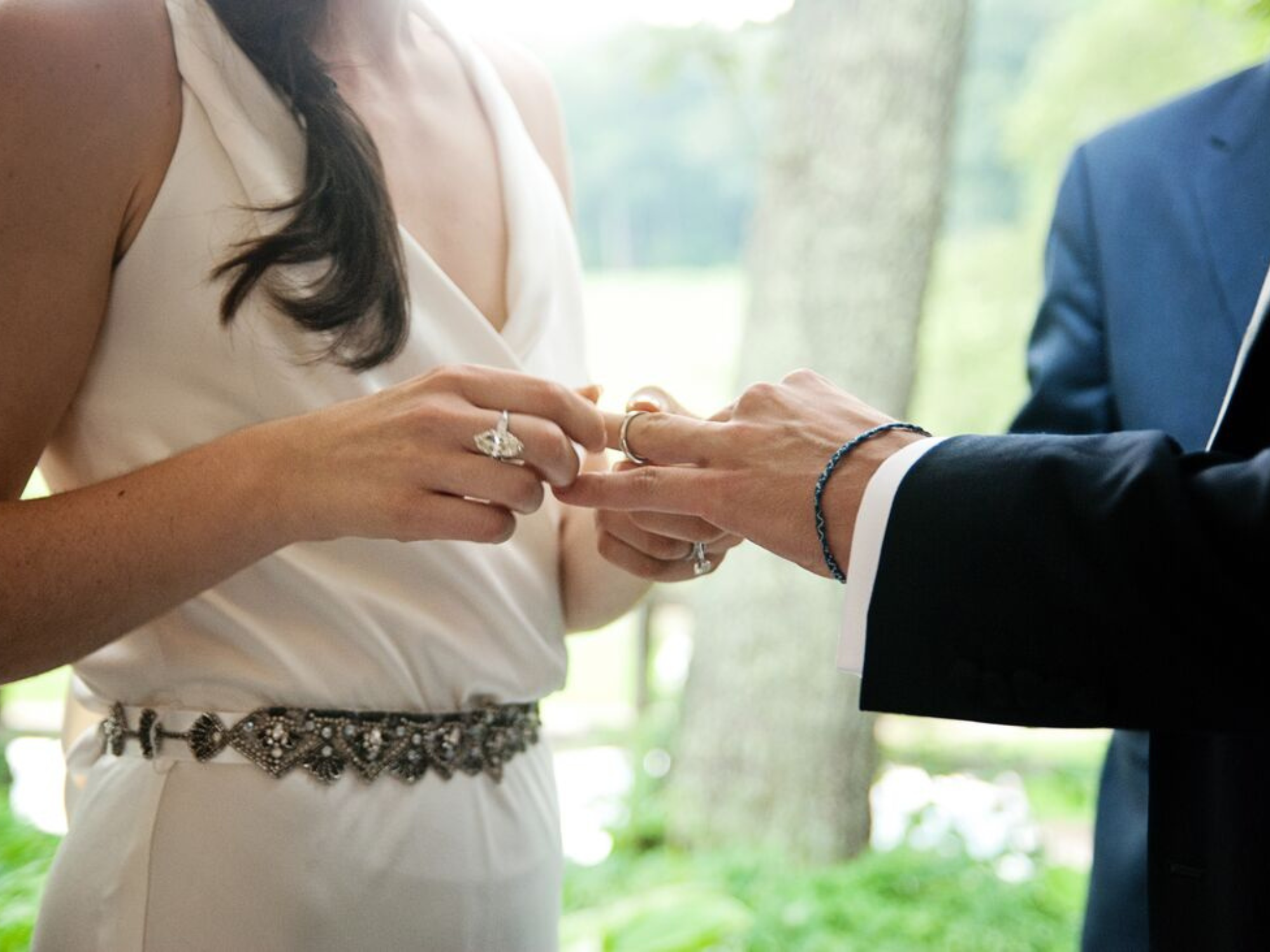
Hora Dance Steps Option #1
Dancers form concentric circles and hold hands by placing their right palms up and left palm downs. The steps for this hora go as follows:
- Step to the side with the left foot.
- Right foot crosses behind the left.
- Step to the side with the left foot again.
- Hop on your left foot.
- Kick with your right foot.
- Step and hop with the right foot.
- Kick with the left.
- Repeat!
Hora Dance Steps Option #2
As above, dancers stand in concentric circles and hold hands by placing their right palms up and left palm downs. Here's another option for a "grapevine-style" hora dance.
- Step to the left and cross the right foot in front of the left.
- Step to the left again, and cross the right foot behind the left.
- Step to the left once more, kick with the right left.
- Step to the right and kick with the left leg.
Throughout the hora, certain guests may be brought to the center of the circle to dance with the couple and their immediate families. Guests may link arms and swing each other around inside the circles. Groups of women may make smaller circles and perform special dances, and groups of men may drape their arms over each other's shoulders and dance in circles or lines.
Are There Traditional Songs That Are Played During the Hora?
The most popular songs that are played during the hora dance, are "Hava Nagila" (meaning "let's rejoice") and "Siman Tov U'Mazal Tov" (meaning "a good sign and good luck will come to us"). Many bands or DJs who are familiar with Jewish weddings have created a medley of hora music, which usually includes the above two Jewish wedding songs, along with other Hebrew songs or Yiddish klezmer music.
"Couples can certainly choose the music that is played during the hora, but you want versions of songs that are upbeat and happy," says Rabbi Cherney. "Make sure that you check which tune or tunes your band or DJ will play before the wedding. Some musicians aren't familiar with the custom and may need some further guidance to make sure it is an uplifting part of the evening."
What Is the Significance of Lifting the Couple Up on Chairs During the Hora?
As the dance progresses, chairs will be brought to the middle of the hora circles and the newlyweds will be encouraged to sit down. Then, guests hoist the chairs up, practically tossing the married couple into the air. This is a particularly fun Jewish wedding tradition that makes for some great photos, but there is a deeper meaning behind it.
"The couple is thought to be spiritually elevated on the day of their wedding," says Rabbi Cherney. "This is symbolized by lifting them up closer to God or physically elevating them, just as they are internally being elevated and blessed spiritually."
One important tip for this tradition: "The chairs should be sturdy wooden chairs with arms—no folding chairs!" says Rabbi Cherney.
Who Is Typically Included in This Tradition?
According to Rabbi Cherney, "the couple themselves are lifted up as well as their parents, and any other immediate family members that are present."
There are no rules about who does the lifting—any strong guests are encouraged to participate and help lift the couple up during this portion of the hora.
Why Do Couples Hold a Napkin While They are Lifted on Chairs?
As the newlyweds are lifted up on the chairs, you might see them holding a napkin between them—each holding a side of the cloth. Wondering the meaning behind this tradition? Turns out the napkin serves as a way for the couple to connect without actually touching each other.
Rabbi Cherney explains: "In religiously observant Jewish communities, men and women have not touched prior to the wedding. While this is very different in religiously liberal Jewish communities, the tradition of connecting through the napkin continues on. The couple are connected even though they are not physically touching. Interestingly enough waving a napkin at a wedding is also a symbol of joy and cheer amongst those who are hard of hearing, instead of clinking glasses!"
How Long Is a Typical Hora Dance?
The length of the hora dance really depends on your community's traditions and your own desires for your reception. According to Rabbi Cherney, "for some families the hora may be just one celebratory song and for other families the hora may last an hour! The time difference may vary based on how well versed the community is in the tradition, as well as the musicians ability to build the energy."
Make sure to discuss your hora with your band or DJ before the big day so you can choose the playlist and the length of time it will take. A music pro who has experience at Jewish weddings will know to ask you about your desired hora length, but if not, don't forget to bring it up.
